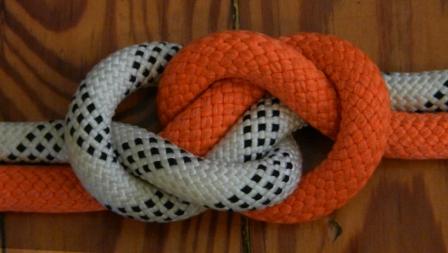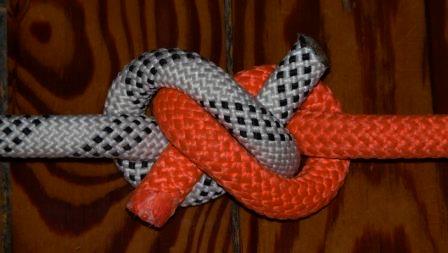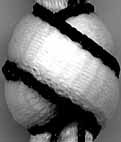How to tie and dress the simplest 2 interlocked overhand knots bend


How to tie and dress the simplest 2 interlocked overhand knots bend


This knot has a few names, one being the True lovers knot. Another is the Two strand full Mathew Walker knot with the two end leads reversed.
It is shown in ABOK, #1426, as a twofold overhand bend.
For me it seems to roll up into place very easily.
No more difficult than a water knot.
Correct me if I"m wrong, but that’s the same knot as the Classical Chinese double connection knot, right? (http://www.chineseknotting.org/connection/howto2x2/). I just tried the knot in climbing rope as your examples show and I still think that’s what it is. It was more difficult to dress in the climbing rope, but what I do when I tie it in satin cord more or less still works:
(1) tie the knot
(2) take out the excess slack (we’re not done here, no need for much precision)
(3) take one set of ends in each hand and push/pull the hands towards and away from each other. Kind of a pumping motion. Quick is good.
You’re introducing and taking away a small amount of slack to/from the knot rapidly. Then physics sorts it all out and everything falls into place.

How have you been using this knot in applications?
It’s often used to both start and end a design, for instance to close off a multi-loop knot so the last loop is not just loose ends. Also at the start so that there is a distinct hanging loop versus the first loop of a knot. It is also used internal to a design to provide some a mildly decorative breathing space between larger elements.
eg. here are double connection knots in between the bao knots
http://www.chineseknotting.org/projects/bbb-necklace.jpg
(bigger here http://www.chineseknotting.org/projects/bbb-necklace-big.jpg)
here’s an example of opening and closing with the double connection
http://www.chineseknotting.org/projects/crystal-earrings.jpg
(bigger here http://www.chineseknotting.org/projects/crystal-earrings-big.jpg
You are very precise which is to your credit. You might like the Korean tying method http://www.seoulmaster.co.kr/gallery/master-09-micro3.php.
Depending on the tying method used, it is often helpful to give the works a half-twist as you are pulling the slack out to get the knot to settle into the correct shape.